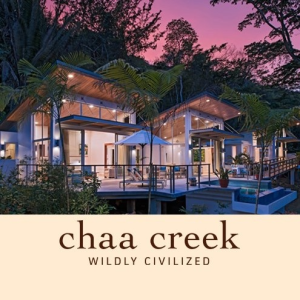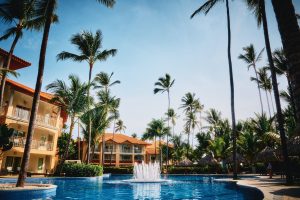Welcome to The Marketing Matrix – a source of wisdom and inspiration for entrepreneurs, business owners, executives, students and anyone who wishes to better understand the world of business and how we all – from established brands, to startup companies, to individuals – fit in.
Blueliner will publish a Travel & Tourism Edition once a month, in the first week of the month, to set the tone for what we plan to share and learn as a community in this period. You can expect to see the following types of content here.
- Tourism Marketing best practices
- Industry Leaders – featured profiles
- Top Destinations and DMOs
- Theme of this month’s Workshop (On Thursday, June 22nd)
- Clips from previous month’s Podcast (see below)
[BELOW IS AN EXCERPT FROM ARMAN ROUSTA ON TRANSFORMATIONAL TRAVEL]
Today we want to talk about what we do when we need to move out of our space; when we need to get a break from our day-to-day grind, our day-to-day lifestyle. Interestingly, a lot of people don’t get to travel as much. There’s a lot of statistics on this. In any country, essentially, a large segment of the population doesn’t really get to travel much outside of that country, or sometimes even outside of their “their square” – their normal routine, their hometown, maybe their neighboring town. And I wanted to focus on that today from a few perspectives.
First and foremost, as some of you may know, my career for 25 years has been tourism, travel and tourism, digital marketing for that sector, as well as other areas, other industries. But tourism has always been a special draw for me, and for us as Blueliner, the agency. It’s very interesting and exciting work, even if you’re not traveling to destinations, to kind of percolate your imagination on what it might be like. Looking at pictures, looking at videos, writing copy, and doing marketing for a destination usually presents some intriguing opportunities. It’s a fun industry to work with and for, and, interestingly, in the first three-to-four years of my experience working for those kinds of companies–it was early in my career, I was younger, I was in my twenties, just really hustling and working hard, putting in a lot of hours – I didn’t often take a minute to actually travel to those places.

So I remember we had this one client in Belize – Chaa Creek Resorts. It looked like one of the most beautiful places you could imagine. Very naturistic, very green, a lot of ecotourism, award-winning. Not like a big hotel, more like boutique style cabins and whatnot. And I remember actually planning a trip towards the end of the time we worked with them. I actually never got to go out to that particular destination. And why is that? Why did that happen? For me, I was just “in it.” I was in the grind; in this New York City agency life working hard to make the money.
But at the same time, I didn’t have enough awareness, or a moment to take a pause and say, “You know what? I could probably do a better job for this client if I spend a week there!” And we certainly had the invitations. And we’re actually trying to reconnect, you know, with Chaa Creek right now. And there were others because we did so well for them. Others in Belize heard about our services, our tourism marketing, and brought us in. And I’ll contrast that, because that was the first part of my career or agency work with tourism. And then, in 2011, it flipped, because we met some people from the Cayman Islands Department of Tourism, the DOT, and they brought in Blueliner for a whole SEO strategy, being the agency of record there.

And the first thing they said to us is, “Now that we’ve hired you, the first requirement is you need to get on a plane and come out to Grand Cayman with anyone who’s gonna work on this account. (Not just me. It was several of us.) “Anyone who’s gonna work on our account needs to know the product, right?” In the tourism industry, the product is the destination, the hotels, the experiences, the tour operators, the restaurants . . . All of that is part of the so-called product. But it’s a real place. It’s a guarantee. It’s a real place. It’s a beautiful island. And you go–not from a business point of view, not from a marketing point of view, just from a life experience point of view. Any new place that’s outside of your box, your normal square, is a beautiful experience.
And for me, it was really eye-opening. I fell in love with Grand Cayman. Of course, the Cayman Islands has a reputation as a tax haven, and the movies portray it as this sneaky, shady place, but that’s not what it is. You can’t believe what you see in the movies or the media. You have to experience things in real time for yourself before you make any judgements. And so I went there with an open mind, and that was the first in 2011 of 20-plus trips that I’ve taken since then, specifically to Grand Cayman.
We still have clients there. I have some of my best friends there. It’s a beautiful, beautiful place, as are many places in the Caribbean and around the world. But that was our fortune, with Blueliner, that we created that connection. And we learned a lot about how to do more effective travel and tourism, marketing; how to connect with a new local culture; because the Caribbean flair in different countries takes on a different vibe, right? Belize, St. Lucia, Cayman, Barbados, Bermuda . . . When you go to a place, there’s what tourism/marketing wants to show you: the best hotels, the best beaches, the best restaurants, which often have a bit of the local flavor, but sometimes they’re kind of. . . imported.
It’s something they brought over because it was a model that worked. We’re gonna bring that same concept over to another island and maybe add a little local flair. Obviously a lot of the staff might be local. In Cayman, interestingly, a lot of staff, local people ended up being expats, people from Europe, Canada, different countries. And then you had that mixed with the more true, native locals. And one of my main points here is that I always preferred to meet someone local early in my trip and ask them to take me to the places that weren’t on the, on the docket, on the Trip Advisor list. And no knock against any online travel agent or social media, but there’s always part of the island or part of the tourism experience that they want you to see that the government might want to promote. And then there’s always, “Let’s go off the beaten path a little bit. Let’s see what life is really like for the locals.” You know?

How does this all apply to marketing and tourism and how we’re rethinking tourism collectively as a group of professionals and an industry? And we still have a number of tourism clients. We work with Health City and the medical tourism sector and it’s wonderful. It’s a wonderful combination of not just tourism for entertainment’s sake, but actual purposeful travel. You know, “I need this procedure and it would be nice to recover with a beachfront view as opposed to city smog and noise.” Right? Isn’t that better and healthier in a lot of ways? That’s part of the draw of Health City and other medical tourism and destination travel. We’ve come up with a lot along the way, but it has to be authentic and the people that go through that have to actually experience that. COVID hit and a lot of that shut down. A lot of our clients and a lot of people suffered who were part of that industry worldwide.
These stories need to become more authentic, more true to the experience. Digital will never be able to replicate the experience you get by going to a place. So the first thing I’ll say is that as individuals and as professionals, we need to really make sure we have that authentic knowledge and experience of whatever it is we’re representing. So, back to what I said before, Blueliner and myself representing Chaa Creek and Belize, where I’ve never been, versus Grand Cayman and Caribbean Club and Health City, where we have been, and that we’ve had a vital part of creating from literally the first brick that was built at Health City. We were there for the foundation and the laying of that. It’s a very different experience. You become a partner in that process, whereas you’re just kind of a second or third-degree storyteller in that other process.
So the last thing I’ll leave everyone with is just whatever your box is – your four corners – you should travel. Even if you do travel somewhere – you might have a summer home, but if it’s always the same, if you’re in New York and you’re going to the Hamptons for the summer, that’s great, that’s a journey – but whatever your current box is, try to think about what can be outside that box.
It reminds me of the first actual tagline we had for Blueliner back in 2000. Everyone talked about thinking outside the box, while we like to be more thinking, planning, and acting outside the box. So what does your current box look like –whether it’s your living situation, or your travel, and the way you move in life? Try to put a couple of darts or pins in the map outside that box and challenge yourself to go there for a day or two . . . a week . . . a month. . . whatever you can manage. And go with a particular intention as well. Like, I’m gonna go here and I’m gonna learn X. And try to connect that to something you can learn from people who are local to that particular place. Challenge yourself. Get outside your comfort zone, get outside of your box, and let me know how it goes. Cheers.





